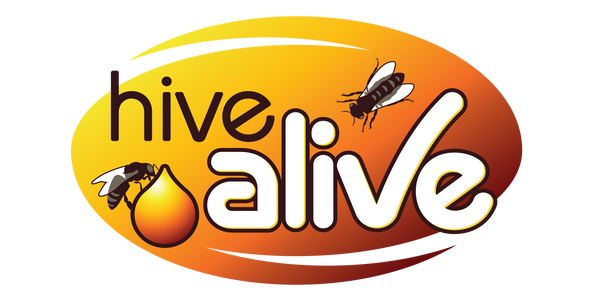The Role of HiveAlive products in Supporting Almond Pollination
Jan 15, 2025

Almond pollination is a pivotal event in the agricultural calendar, especially in regions like California, where almond orchards span vast areas. This process not only ensures the production of almonds but also significantly impacts the beekeeping industry, as honey bees are the primary pollinators for almond trees. However, the migration and deployment of bee colonies for almond pollination present several challenges that beekeepers must navigate to maintain colony health and productivity.
The Significance of Almond Pollination
Almonds are among the first crops to bloom each year, typically flowering between late February and early March. This early bloom necessitates the availability of strong and healthy bee colonies capable of effective pollination. In California, which produces approximately 80% of the world's almonds, over 1.6 million bee colonies are required annually for pollination services. This demand underscores the critical role that honey bees play in the almond industry.
Challenges Faced by Beekeepers During Almond Pollination
1. Stress of Migration
Transporting bee colonies over long distances to almond orchards can induce significant stress. Factors such as temperature fluctuations, confinement during transit, and disruption of the bees' natural behaviors can weaken colonies, making them more susceptible to diseases and reducing their overall vitality.
2. Nutritional Deficiencies
Almond orchards often lack diverse forage, providing limited pollen and nectar sources. This monoculture environment can lead to nutritional deficiencies in bee colonies, affecting their health and productivity. Supplemental feeding becomes essential to ensure bees receive a balanced diet.
3. Exposure to Pesticides
The application of pesticides in almond orchards poses a risk to bee health. Even with best management practices, bees can be exposed to harmful chemicals, leading to increased mortality rates and weakened colonies.
4. Environmental Stressors
Adverse weather conditions, such as unexpected cold snaps or heavy rains during the bloom period, can limit foraging opportunities and further stress bee colonies. Additionally, the high density of colonies in orchards can facilitate the spread of pests and diseases.
Best Practices for Supporting Bee Colonies During Almond Pollination
To mitigate the challenges associated with almond pollination, beekeepers can implement several best practices:
1. Pre-Migration Preparation
-
Colony Strength Assessment: Ensure that each colony is robust, with adequate bee populations and healthy queens, before transportation.
-
Disease Management: Conduct thorough inspections and treatments for common pests and diseases, such as Varroa mites, to reduce stress during migration.
2. Nutritional Support
-
Supplemental Feeding: Provide protein patties and sugar syrups to compensate for the lack of diverse forage in almond orchards. This practice helps maintain colony strength and supports brood rearing.
-
Access to Clean Water: Ensure that bees have access to clean water sources to aid in digestion and thermoregulation.
3. Collaboration with Growers
-
Communication: Engage in open dialogue with almond growers regarding pesticide application schedules and locations to minimize bee exposure to harmful chemicals.
-
Hive Placement: Strategically place hives within orchards to optimize foraging efficiency and reduce exposure to environmental stressors.
4. Post-Pollination Care
-
Health Monitoring: After pollination, assess colonies for signs of stress or disease and provide necessary treatments promptly.
-
Nutritional Recovery: Continue supplemental feeding to help colonies recover and prepare for subsequent foraging seasons.
The Role of HiveAlive Products in Supporting Bee Health
HiveAlive offers a range of scientifically formulated products designed to enhance bee health, particularly during the demanding almond pollination period:
-
HiveAlive Liquid: This feed supplement contains a unique blend of seaweed extracts and essential oils that improve gut health and boost immunity, helping bees withstand the stresses of migration and exposure to pesticides.
-
HiveAlive Fondant: Ideal for providing easily accessible nutrition during periods of limited forage, this fondant ensures that bees have the energy required for effective pollination activities.
-
HiveAlive Protein Patties: Enriched with real pollen, these patties support brood rearing and colony strength, preparing bees for the intensive demands of almond pollination.
By integrating HiveAlive products into their management practices, beekeepers can enhance colony resilience, reduce mortality rates, and ensure successful pollination outcomes.
Conclusion
Almond pollination presents both opportunities and challenges for beekeepers. By understanding the potential stressors and implementing best management practices, including the use of HiveAlive products, beekeepers can support their colonies through this critical period. Collaboration between beekeepers and almond growers is essential to promote bee health and ensure the sustainability of both industries.
For more detailed guidelines on honey bee management during almond pollination, refer to the Almond Board of California's Honey Bee Best Management Practices.
By prioritizing bee health and adopting proactive strategies, we can ensure that almond pollination remains a mutually beneficial endeavor for both agriculture and apiculture.
